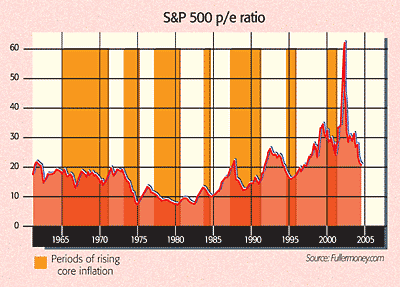
“When Paul Volcker declared several weeks ago that the world was in a ‘dollar crisis’, his successors at the Federal Reserve made their private disapproval very clear,” says The Wall Street Journal. “This week current Fed chairman Ben Bernanke waved the white flag over Mr Volcker’s point.” At last, says The Economist: American officials have finally shown evidence of being worried about the weak dollar. After years of pretending that America favoured a strong dollar, “even though everyone knew policymakers quietly welcomed its slide”, both treasury secretary Hank Paulson and, in a break with convention, Bernanke delivered speeches that “left no doubt” that further dollar weakness is unwelcome. “By the standards of most officials’ currency commentary this was strong stuff and the dollar duly strengthened.”
The main motivation behind the jawboning is rising inflation; Bernanke directly linked the dollar’s slide to an “unwelcome” rise in inflation through higher import prices – not only is American consumer price inflation now at 3.9%, but consumers’ long-term inflation expectations are at a 13-year high of 3.4%. At times like this, “central bankers must appear vigilant”, says The Economist; hence the effort to talk up the dollar. But for all Bernanke’s tough words, “the signal is about the end of rate cuts rather than imminent rises”. If push comes to shove, will the Fed walk the walk with higher rates? Definitely, says Ambrose Evans-Pritchard in The Daily Telegraph. Bernanke’s fortitude may be suspect, but “überhawks and Cromwellians”, such as Fed board member Richard Fisher, are gaining the upper hand. Together with the stance of European Central Bank chief Jean-Claude Trichet, this points to a “monetary purge” from the world’s most important central banks. Rightly or wrongly – and perhaps wrongly, given that the West faces debt deflation as “years of credit abuse come back to haunt it” – we should expect tighter policy. “Fetch your tin hats once again.”
Others were not so sure. Despite the rhetoric, Bernanke signalled that he isn’t about to tighten policy anytime soon, says The Wall Street Journal. He spoke of current rates being well positioned for both growth and price stability. But “price stability where”? American inflation figures don’t suggest that. The “Fed-inspired commodity boom has sent food and energy prices soaring”, while real wage growth is anaemic. Even worse, “the Bernanke Fed has also been oblivious to the fact it runs a global dollar bloc” of countries who peg or link their currencies to the greenback. The Fed’s “indifference” has sent inflation soaring in economies from China to Kuwait to Vietnam. “It will take more than a single speech from Mr Bernanke to undo this damage.”
Meanwhile, with investors confused and irrational, “fear stalks the markets”, says Edward Hadas on Breakingviews; American stocks slumped 3% on Friday. If inflation is rising, they should brace themselves for turbulence: “Almost by definition, inflation is hard on financial assets”. Although equities should be an exception – theory says they are a good inflation hedge as corporate revenues rise along with prices – “in practice managers find it hard to push prices up fast enough to keep pace with higher costs”.
Yes, agrees David Fuller on Fullermoney.com, “inflation can really take the wind out of stocks” – the graph above of the S&P500 shows clearly that during periods of rising core inflation, p/e ratios tend to suffer as investors become more cautious about paying for earnings growth. But deflation is also bad, as shown by Japan’s 13-year bear market. The best environment for equities is disinflation, when a long-term inflationary cycle has peaked and interest rates are on their way down, and that Goldilocks environment is unlikely to be back soon.